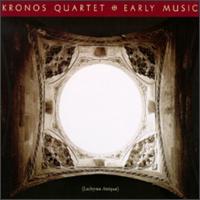
蘭学 Rangaku
"The introduction of Dutch-style medicine, particularly surgery (oranda-ryû geka), was the result of structurally favorable conditions combined with individually motivated efforts and mere circumstantial events. In 1649, the Dutch East India Company dispatched a special envoy to Japan, as Dutch–Japanese relations had been somewhat strained by several incidents. When Andries Friese (Frisius) arrived in Edo at the end of that year, shôgun Iemitsu was ill. As his consent and a final audience were necessary to conclude the complex negotiations, Friese’s stay in Edo had to be extended several times. This enabled high-ranking—that is to say, for the most part elderly and ailing—Japanese officials, to test the skills of ‘Master Caspar’, a surgeon hardened on the battlefields of Germany, who had accompanied Frisius to Edo. The results must have been satisfying. At the request of the court, Caspar Schamberger (1623–1706) stayed in Edo for an exceptionally long 10 months. Thus, the usefulness of certain treatment methods, plasters, and ointments was acknowledged first at the top of the power elite. This turned out to be very important for the further promulgation of Western medicine during the following decades ... Obviously, the adoption of Western medical knowledge was seen as beneficial not only to the personal health of influential people at the court but also to the further development of Japan and thus to the consolidation of the Tokugawa regime. In addition to medicine and pharmacy, armaments, astronomy, and cartography were of special interest, and the supply of goods in these branches of knowledge was never threatened, even after the introduction of the Japanese seclusion policy."
-- Frontier Crossing and Intellectual Curiosity: On the Modernization of Japanese Medicine during the Edo Period

"Cholera became the archetypal epidemic disease in the eyes of government, physicians, and the general public, and measures aimed at its control became models for the control of other diseases. The disease received so much attention that it came to be called the 'mother of hygiene' in Japan. Two major cholera epidemics occurred during the last decades of the Edo period, killing hundreds of thousands of people. The most serious of the two, which struck during 1858 and 1859, convinced officials of the Tokugawa bakufu that the disease might once again ravage the land unless it could be kept from entering the country. In hope of establishing regulations for the quarantine of foreign ships carrying persons infected with cholera, the Tokugawa bakufu opened negotiations with the governments of several Western nations including English, France, and the United States but failed to gain their cooperation. Their representatives asserted that the Japanese had no scientific basis for their desire to quarantine cholera victims; unlike their Japanese counterparts, most Western physicians at the time did not believe this disease was contagious. As inhabitants of an island country with limited contact with the outside world, the Japanese could see more clearly than most Europeans and Americans that cholera epidemics were indeed contagious and could be contained by quarantine.
Yet the most deadly epidemic disease throughout the Edo period was not of recent foreign origin. Smallpox, which since ancient times had swept the country in several epidemics, had become endemic by the thirteenth century and remained the most serious single acute infectious disease throughout the Edo period ... Physicians ... soon began offering vaccinations to the public, and from then on Dutch-school (Ranpo) physicians throughout the country publicaly administered them. Even the general populace did not welcome the practice, but the efficacy of the vaccinations led the Tokugawa bakufu to give offical recognition to the Dutch school of medicine after it had been briefly banned."
-- 'The Modern Epidemic' By William Johnston




view the Kyushu Medical Books @ BibliOdyssey >>














No comments:
Post a Comment